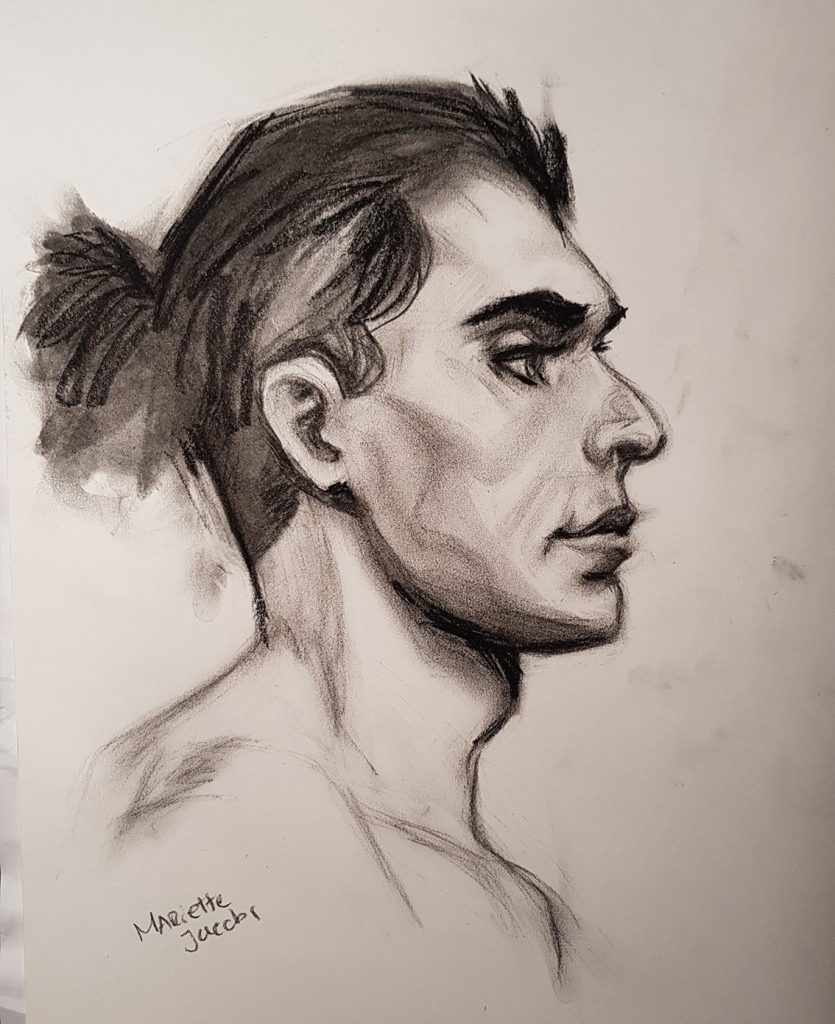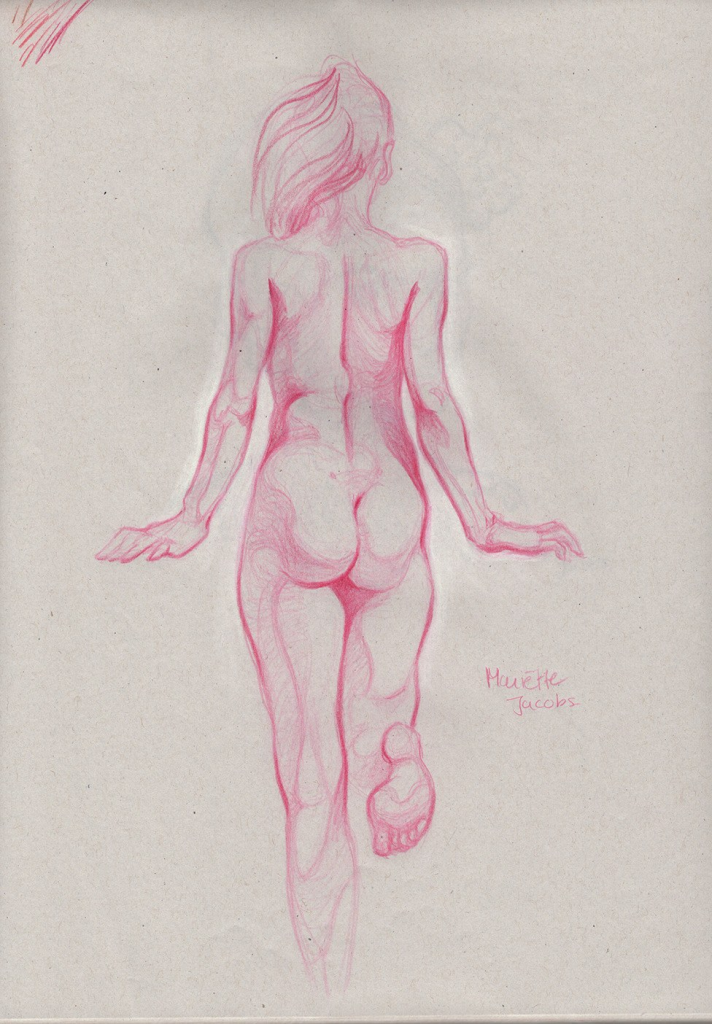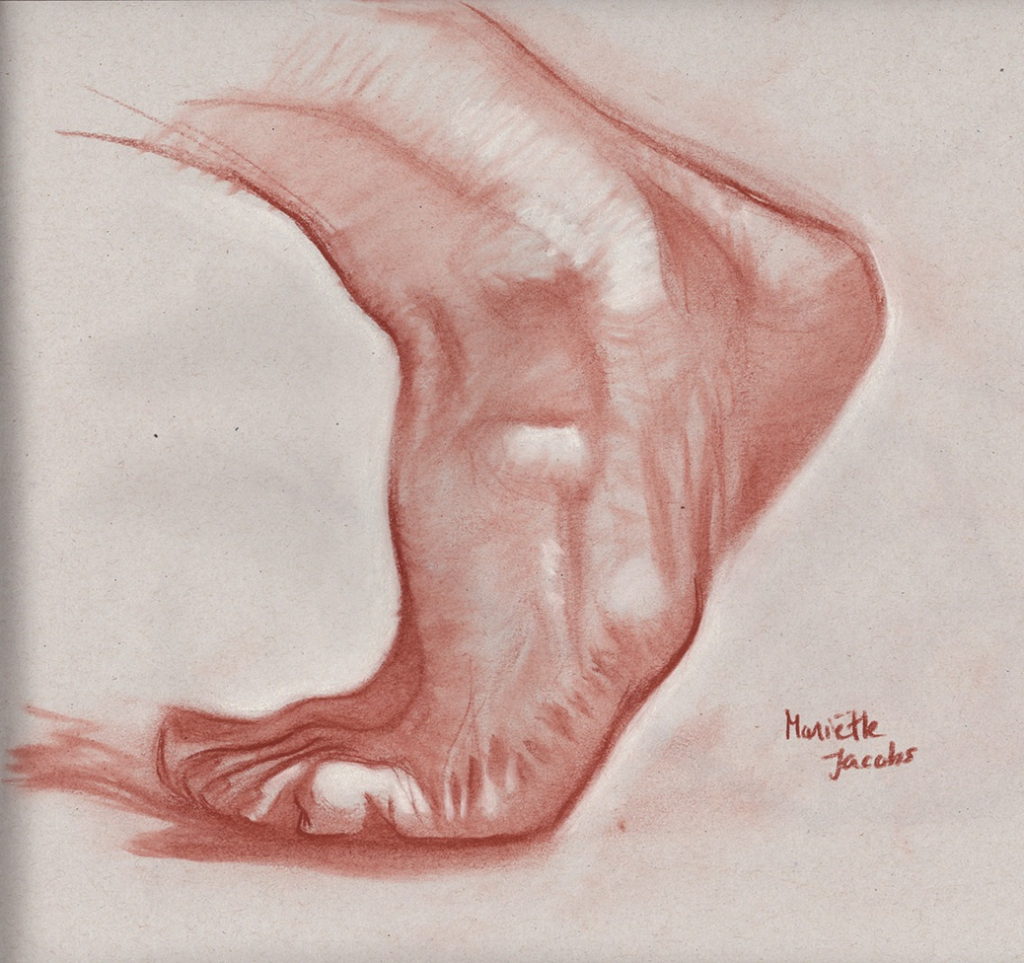The More You Know
Mariette Jacobs tells us how 8 weeks in Figure Drawing: Anatomy of Style helped her understand human anatomy but also gain confidence as an artist.
Introduction
Hi Everyone! My name is Mariette Jacobs and I am an artist from the Netherlands. I have been working as a 2D concept artist and illustrator in the game industry for 4 years on different mobile titles. Before that, I studied Game Art & Design at the University of the Arts in Utrecht.
As an artist, I’m always eager to improve my skills whenever and however I can. I usually work digitally, but this course has brought back my love for traditional art. Recently I started focusing more on character design and figure drawing. I’ve chosen Figure Drawing: Anatomy of style course to get a better understanding of anatomy and to improve my skill and my style.
Drawing the Head

In the beginning, it was a fun challenge to work in traditional media. It was really refreshing touching the pencil, paper, and chalk, instead of looking at a screen. In the game industry, everything is done digitally, so it’s easy to forget the traditional fundamentals. Patrick clearly demonstrates how to use these tools and make them work in your favor. He provides images you can work from, however, this does not mean you can’t use other references. It would be even better if you are able to attend live figure drawing sessions!
The Female Figure


What is interesting about Patrick’s approach to drawing the figure is that he talks a lot about finding the balance between structure, gesture, and style. You don’t want the figure to look like an exact copy of the photo because it will make it look very stiff and unnatural. Understanding the figure is key to finding that balance. To make it look, how you want it to look. I always enjoy having some stylization within my work but at the same time, create enough definition to make it feel real.
When I start working on a figure, I usually do a couple of warm-up sketches of the same pose to understand what I’m looking at. Where are the angles, what kind of shapes am I seeing and what is my focus point within this figure. Once I figured that out, I put down the landmarks of the body and build it up slowly.

The most challenging poses were definitely the foreshortening ones. It is important to understand how the overlap works together with proportions. Especially when working from a photo, the camera can skew the image quite a bit. Patrick helps you understand the image and then gives you the tools to conquer the pose.
Muscles

With the arms, I tried to see the rhythm within the muscles. One muscle folds into the other one and they constantly overlap each other, which creates a flow within them. Knowing this helped me deconstruct and understand them. Understanding how the body works, really helped me draw better. I believe this applies to a lot of aspects of art.


Patrick shares his study sheets of how certain muscles and structures work in the body which I placed all over my workspace so I always have my reference nearby. The more you look at something, the more you will apply this knowledge. Another trick Patrick teaches you is to use mnemonics for different parts of the body. For example, the deltoid looks like a heart, the ribcage looks similar to a braid, or the kneecap looks like an icecream cone.
The Hands & Feet

Hands and feet are the toughest body parts to draw, all of the previous lessons helped me find the balance between structure and gesture. This is where all these lessons came together. Especially with difficult topics like the hands and feet, it is best to give yourself room to think and observe before you put down a stroke. It will actually make your drawings work better and your process much more enjoyable and faster.


One of the things Patrick taught me was ‘ghost lines’. Ghost lines are areas in your linework where you leave an opening and let your drawing breathe. They are a great way to give your work more dimension and life. As a viewer, you usually don’t even realize they are there, because your brain is wired to fill in those gaps.
My drawings changed drastically during this course. I have a much better understanding of the underlying structure of the body as well as seeing the rhythm and shapes. I know how to work with tools like charcoal and pastel and bend them to my will. But most importantly, I gained more confidence in my own art!
Final Thoughts
Feedback rounds are done by having a live Q&A session with the entire group so it’s easier to start a conversation with Patrick as well as your fellow classmates. Patrick also addresses a lot of problems people encounter throughout their art career and varies from low self-esteem issues to how to deal with a client.
For me, the biggest philosophy take-away is understanding that if something looks or feels wrong, it probably is. Even though it is structurally correct; trust your own eyes and judgment. This course did not only improve my traditional work but it brings another layer to my digital work as well. Patrick is a great teacher and I would highly recommend this course to anyone who wants to improve their figure drawing as well as improving on their own style!
You see more from Mariette here:
Artstation: https://www.artstation.com/mjj
Instagram: https://www.instagram.com/mjj_
















